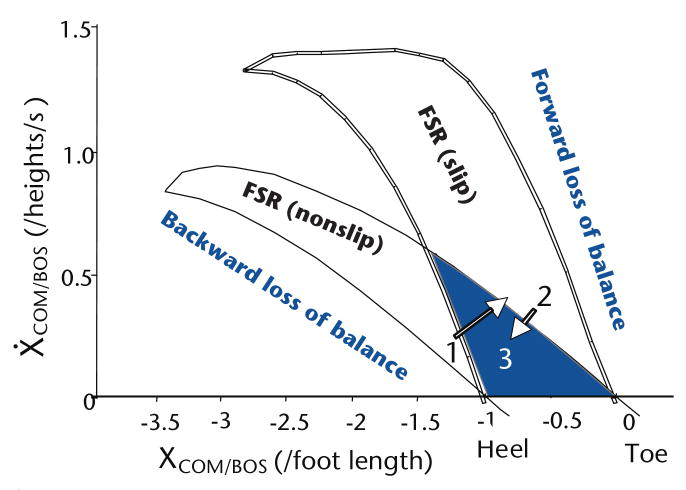Figure 1.
The predicted feasible stability region (FSR) for both slip and nonslip conditions in the center of mass (COM) state-space (ie, its position and velocity). The position of the COM in the anteroposterior direction was expressed relative to the rear of the base of support (BOS) (XCOM/BOS) of the most recent foot to touch-down (ie, the heel of the sliding foot for slip onset) and normalized to foot length. The COM velocity in the anteroposterior direction was expressed relative to the velocity of the BOS (Ẋ COM/BOS) and normalized to body height. During regular sit-to-stands prior to their exposure to slipping, 41 older adults' COM state at seat-off was around area 1, which was very near the boundary for backward balance loss for a slip. Subsequently, they all experienced backward balance loss during the first, novel slip. Following repeated exposures to slipping, their COM state at seat-off was shifted from area 1 to area 2, which was inside the stability region for slipping but near the forward balance loss region for the nonslip condition. Nearly all of them experienced forward balance loss when the slip stopped. After the nonslip block, they readjusted their COM state from area 2 to area 3, which is in the middle of the shaded area where stability can be maintained regardless whether a slip occurs or does not occur.56

